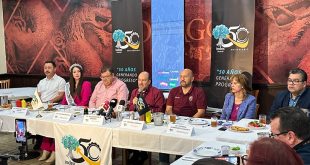
If you have been following this series of articles, you know now what Project Management is and the initial processes required to start a new project. You also know that the Project Management Institute mentions five process groups from initiating a project all the way to its closing covering ten different Knowledge Areas. All of these five process groups are important and a project will be less likely to succeed without them. This article will discuss the second group: The Planning Process Group. The PMI® defines the planning process group as follows: “The Planning Process Group consists of those processes performed to establish the total scope of the effort, define and refine objectives, and develop the course of action required to attain those objectives.” – A Guide to the Project Management Body of Knowledge (PMBOK Guide) Fifth Edition. From the five process groups, it´s the most complex and the only one that covers all ten Knowledge Areas.
Deliverables of the Planning Process Group are The Project Management Plan and the project documents that will explore all aspects of the scope, time, cost, quality, communications, human resources, risks, procurements, and stakeholder engagement.
We will now try to provide a description of the first processes involved in developing The Project Management Plan.
 Developing a Project Management Plan
Developing a Project Management Plan
This process belongs to the Project Integration Management knowledge area. It has only one output and that is the Project Management Plan. This plan is developed by reviewing the Project Charter and outputs from several other processes, such as the Communications Management Plan and the Cost Management Plan. The Project Management Plan is used by over 20 other processes, such as Plan Schedule Management and Control Risks. Therefore, it is a critical artifact.
Plan Scope Management, Collect Requirements, Define Scope, Create WBS
These processes belong to the Project Scope Management knowledge area. Some outputs of these processes are:
Plan Scope Management: The outputs of this process are the Scope Management Plan and Requirements Management Plan. The Scope Management Plan describes how the scope is defined, validated, and controlled.
Collect Requirements: The outputs to this process are the Requirements Traceability Matrix and the Requirements Documentation. Significant effort is expended in understanding the stakeholder expectations and needs. Some of the techniques used include prototyping, interviewing, and group creativity techniques, such as brainstorming.
Define Scope: The outputs of this process are the Project Scope Statement and updates to the Project Documents. The Project Scope Statement describes the project scope and the documents the project and product scope.
Create WBS: The outputs to this process are the Scope Baseline and the updates to the Project Documents. In this process, the scope is divided into smaller chunks.
As you can see, these processes are key to a successful project. There are over twenty processes in the Planning Process Group. We will try to cover them in upcoming articles or contact CETYS Universidad´s Continuing Education department, a Registered Education Provider for the Project Management Institute and experts in the field of Project Management. Call +52(686)567-3737, email cursos@cetys.mx or visit www.cetys.mx/educon
Miguel Urriza
Dean of Extension and Continuing Education
CETYS Universidad, Campus Mexicali





